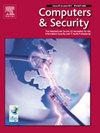自动化渗透测试:形式化和实现
IF 4.8
2区 计算机科学
Q1 COMPUTER SCIENCE, INFORMATION SYSTEMS
引用次数: 0
摘要
由于软件系统在满足社会需求方面的重要性日益增加,标准和法规的最新变化要求增加软件系统的安全性测试。渗透测试已被证明是评估软件系统安全性的一种可靠方法。然而,手工渗透测试是劳动密集型的,并且需要高度熟练的从业者。考虑到网络安全专家的短缺和当前的社会需求,提高渗透测试中涉及的自动化程度可以帮助满足增加的安全测试的需求。在这项工作中,我们在体系结构层面正式表达了渗透测试问题,并提出了一个通用的自组织体系结构,该体系结构可以实例化以自动化实际系统的渗透测试。我们在ADAPT中进一步描述和实现了架构的专门化,这是一个架构驱动的自动化渗透测试工具,目标是由主机和服务组成的系统。我们通过自动执行渗透测试来评估和演示ADAPT的可行性,并成功地针对:Metasploitable2, Metasploitable3,以及用作渗透测试人员培训的实验室环境的现实虚拟网络。本文章由计算机程序翻译,如有差异,请以英文原文为准。
Automated penetration testing: Formalization and realization
Recent changes in standards and regulations, driven by the increasing importance of software systems in meeting societal needs, mandate increased security testing of software systems. Penetration testing has been shown to be a reliable method to asses software system security. However, manual penetration testing is labor-intensive and requires highly skilled practitioners. Given the shortage of cybersecurity experts and current societal needs, increasing the degree of automation involved in penetration testing can aid in fulfilling the demands for increased security testing. In this work, we formally express the penetration testing problem at the architectural level and suggest a general self-organizing architecture that can be instantiated to automate penetration testing of real systems. We further describe and implement a specialization of the architecture in ADAPT, an architecture-driven automated penetration testing tool, targeting systems composed of hosts and services. We evaluate and demonstrate the feasibility of ADAPT by automatically performing penetration tests with success against: Metasploitable2, Metasploitable3, and a realistic virtual network used as a lab environment for penetration tester training.
求助全文
通过发布文献求助,成功后即可免费获取论文全文。
去求助
来源期刊

Computers & Security
工程技术-计算机:信息系统
CiteScore
12.40
自引率
7.10%
发文量
365
审稿时长
10.7 months
期刊介绍:
Computers & Security is the most respected technical journal in the IT security field. With its high-profile editorial board and informative regular features and columns, the journal is essential reading for IT security professionals around the world.
Computers & Security provides you with a unique blend of leading edge research and sound practical management advice. It is aimed at the professional involved with computer security, audit, control and data integrity in all sectors - industry, commerce and academia. Recognized worldwide as THE primary source of reference for applied research and technical expertise it is your first step to fully secure systems.
 求助内容:
求助内容: 应助结果提醒方式:
应助结果提醒方式:


